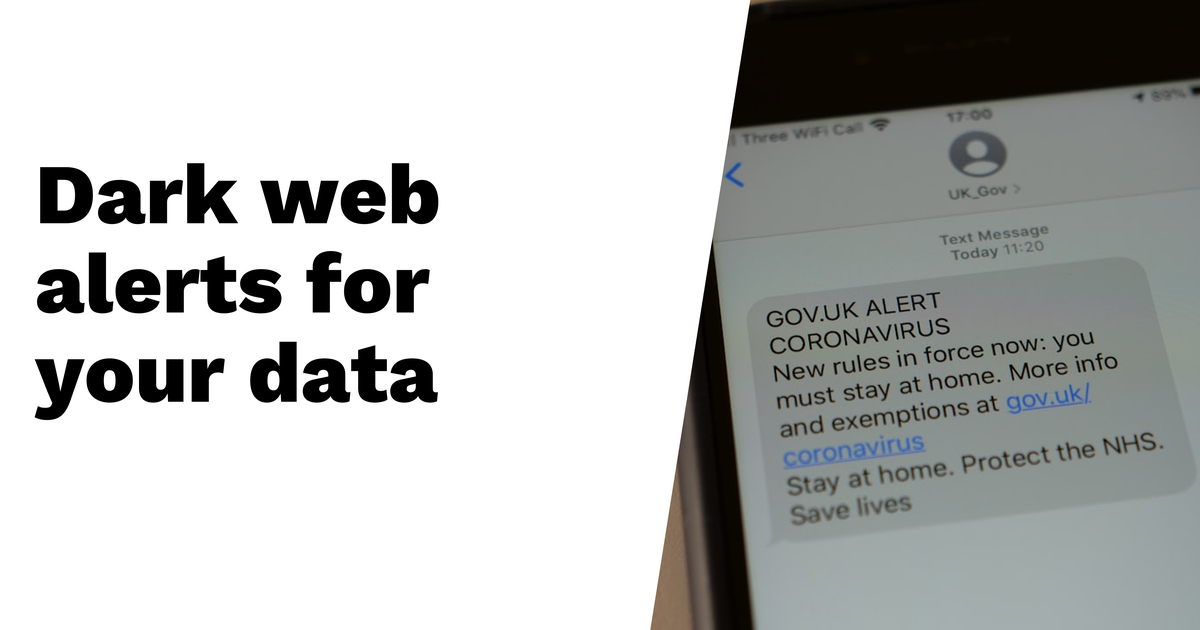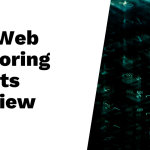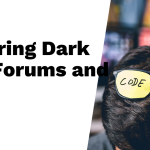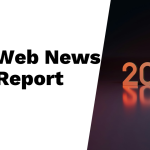Dark web alerts serve as critical notifications when your personal data is at risk. When monitoring tools scan the dark web, looking through illicit marketplaces and forums, they detect compromised information, like email addresses or Social Security numbers. If sensitive data appears, users receive immediate alerts. These alerts can provide details on what information is exposed and suggest actions, such as changing passwords or enabling two-factor authentication. While these notifications are helpful for quick action, they do not remove data from the dark web; users still need to take proactive steps to secure their information after receiving an alert. This can be especially important for anyone with online accounts.
Table of Contents
- What is a Dark Web Alert?
- How Dark Web Monitoring Works
- Types of Information Monitored
- Events That Trigger Dark Web Alerts
- Different Types of Dark Web Alerts
- Benefits of Receiving Dark Web Alerts
- Steps to Take After an Alert
- Challenges of Dark Web Monitoring
- Who Should Use Dark Web Monitoring?
- Final Thoughts on Dark Web Alerts
- Frequently Asked Questions
1. What is a Dark Web Alert?
A dark web alert is a notification that informs you when your personal data, such as your name, email, and login credentials, has been detected on the dark web. This data is often sold by cybercriminals following data breaches. These alerts are usually provided by specialized dark web monitoring services or financial institutions like banks, which have started to offer this protective feature. When you receive an alert, it means that your data may be compromised, which is a serious concern in today’s digital age.
The monitoring services continuously scan the dark web, including underground marketplaces and forums, to find compromised information. When they identify your data, they send you an alert through email, SMS, or app notifications. The urgency of these alerts can vary depending on the nature of the breach, and they often include details about where the data was found, helping you understand the potential risks. These alerts typically cover various types of sensitive information, from login credentials to financial and personal details.
Receiving a dark web alert acts as a prompt for immediate action. For instance, if your email and password are found for sale, you will need to change your password right away to prevent unauthorized access to your accounts. This service is essential for anyone concerned about identity theft, as it helps users stay one step ahead of cyber threats.
2. How Dark Web Monitoring Works
Dark web monitoring tools are designed to keep a close eye on the hidden corners of the internet where personal information can be compromised. These tools work continuously, using automated crawlers that operate around the clock to search through illicit marketplaces and forums. When they detect sensitive data, such as your email address or social security number, an alert is triggered immediately to inform you of the potential risk.
To enhance their effectiveness, these monitoring services often employ advanced technologies like artificial intelligence and machine learning. This technology helps in recognizing patterns and verifying data, which significantly reduces the chances of false alerts. Users can also customize what types of information they want to monitor, be it login credentials, financial details, or personal identifiers.
When an alert is generated, it provides users with timely notifications, allowing them to take necessary actions quickly. For instance, if your credit card information is found for sale, you can act fast to secure your accounts. Additionally, many service providers collaborate with cybersecurity experts to ensure comprehensive monitoring across various platforms. Regular updates to the monitoring systems further enhance efficiency, making it easier to stay ahead of potential threats.
3. Types of Information Monitored
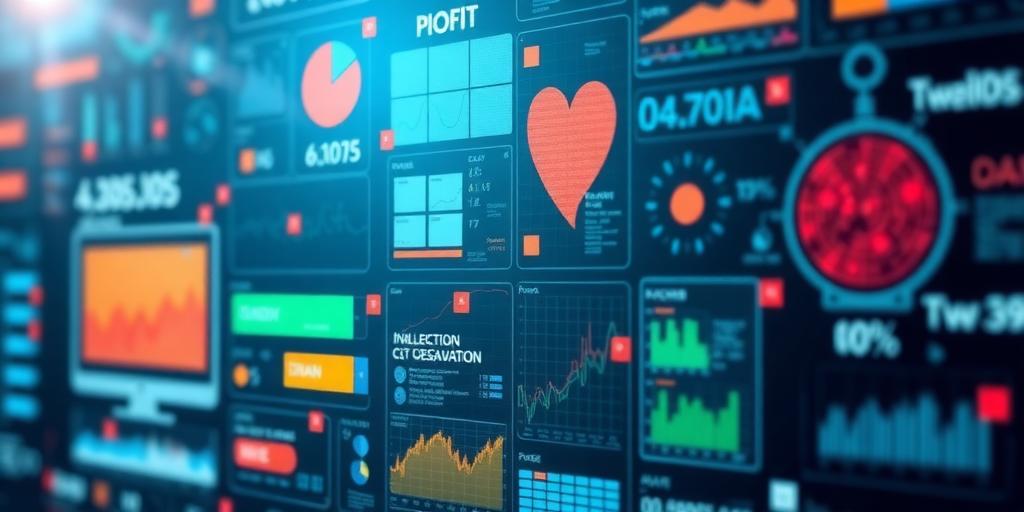
Dark web monitoring focuses on various types of sensitive information that can be exploited by cybercriminals. One of the primary concerns is login credentials, which include email addresses, usernames, and passwords. If these credentials are compromised, it can lead to unauthorized access to accounts. Financial data is another critical area, encompassing credit card numbers and bank account details, which can be sold on the dark web for fraudulent transactions.
Government-issued identification, like Social Security numbers and driver’s licenses, is also monitored closely, as this information is often required for identity theft. Personal identification details, such as names, dates of birth, and home addresses, are scrutinized to prevent risks associated with identity fraud.
Medical records are increasingly targeted as they contain valuable information that can be used maliciously, from insurance fraud to blackmail. Businesses are not exempt; corporate data can be monitored to protect sensitive customer information and prevent leaks that could harm a company’s reputation.
Additionally, user accounts from social media platforms and other online services are tracked, as these accounts can be gateways to further personal information. Information from past data breaches is also of concern, since compromised data can resurface and be used against individuals. Lastly, email addresses used across various accounts and subscriptions are monitored to alert users of potential risks, ensuring that any personal data that might be exploited is on the radar.
| Type of Information | Description |
|---|---|
| Login Credentials | Email addresses, usernames, passwords |
| Financial Data | Credit card numbers, bank account details |
| Government IDs | Social Security numbers, driver’s licenses |
| Personal Details | Name, date of birth, addresses |
| Medical Information | Health records |
| Corporate Data | Sensitive information from businesses |
| Social Media Accounts | User accounts from various platforms |
| Data from Past Breaches | Information from previous incidents that may resurface |
| Email Addresses | Used in various accounts and subscriptions |
| Any Exploitable Data | Any personal data that cybercriminals can leverage |
4. Events That Trigger Dark Web Alerts
Dark web alerts can be triggered by several significant events that indicate your personal data might be compromised. One common trigger is the detection of leaked data resulting from major data breaches. When companies experience breaches, sensitive information often ends up on the dark web, prompting alerts for affected users. Another critical event is when personal information is shared on illicit forums or marketplaces, which can include anything from login credentials to financial details.
Phishing attacks also play a role, as they can lead to compromised accounts and subsequent data exposure. Infections from malware can further expose user data, making it available to cybercriminals. Unauthorized access to accounts by hackers can trigger alerts, especially when they succeed in stealing sensitive information. Additionally, the sale of stolen data on dark web platforms raises red flags, leading to prompt notifications.
Insider threats within organizations can result in data leaks, which are another source of alerts. Public disclosures of data breaches affecting users often trigger notifications to inform those at risk. User-reported incidents that align with monitoring findings can also generate alerts, reinforcing the importance of community vigilance. Lastly, alerts may follow high-profile cybercrime events, keeping users informed about potential risks to their data.
5. Different Types of Dark Web Alerts
Dark web alerts come in various forms, each tailored to provide specific information about potential threats to your data. For instance, you may receive alerts focused on credit card information, notifying you if your card details are being traded on illicit marketplaces. Other alerts can reveal full identity exposure, detailing every piece of personal information that has been compromised, such as your name, address, and Social Security number.
These alerts often include contextual information about the breach, such as how the data was leaked and where it was found. For example, an alert might specify that your credentials were discovered on a particular forum, giving you insight into the nature of the threat. Some alerts even provide geographical details, indicating where the breach occurred, adding another layer of awareness.
Severity ratings also play a crucial role in dark web alerts. You might receive a warning that rates the seriousness of the threat, helping you prioritize your response. Additionally, alerts may inform you of changes in monitoring status over time, such as new findings since your last notification, ensuring you’re always updated on your data’s safety.
Importantly, alerts often come with recommendations for immediate actions. If your data is found, you might be advised to change passwords, freeze your credit, or monitor your financial statements closely. Some services also provide updates on ongoing investigations related to the breach, giving you a comprehensive view of the situation.
Finally, dark web alerts summarize data exposure risks and trends, allowing you to track how often your information is compromised. This can be invaluable for understanding the broader context of data security and taking proactive measures to protect your identity.
- Alerts about specific types of data, like credit cards.
- Detailed alerts regarding full identity exposure.
- Contextual information about the nature of the breach.
- Recommendations for immediate actions to take.
- Geographical location of the breach, if applicable.
- Severity ratings for the detected threat.
- Alerts on changes in monitoring status over time.
- Notifications for new findings after previous alerts.
- Updates on the status of ongoing investigations.
- Summaries of data exposure risks and trends.
6. Benefits of Receiving Dark Web Alerts
Receiving dark web alerts comes with several advantages that can significantly enhance your online security. First and foremost, these alerts provide quick notifications, enabling you to act fast and secure your accounts before any damage is done. When you receive an alert, you can take preventive measures immediately, such as changing your passwords or enabling two-factor authentication, which helps shield your accounts from unauthorized access.
Moreover, dark web alerts boost your awareness of potential cyber threats. Being informed about where your data might be compromised allows you to adopt better online security practices. This proactive approach not only keeps your information safer but also creates peace of mind knowing that your data is being monitored continuously.
Alerts also provide guidance on specific actions based on the severity of the threat. For example, if your credit card information is found, you might need to freeze your card or review transactions closely. Understanding the dark web landscape through these alerts can empower you to use stronger, unique passwords, making it harder for cybercriminals to exploit your information.
Additionally, dark web alerts support your efforts in preventing identity theft. By staying ahead of potential risks and taking action promptly, you can maintain control over your personal data and protect your identity in a digital world that is increasingly vulnerable.
7. Steps to Take After an Alert
Upon receiving a dark web alert, your first action should be to change any compromised passwords immediately. This step is crucial as it prevents unauthorized access to your accounts. Next, enable two-factor authentication on accounts that offer it, adding an extra layer of security. After securing your accounts, it is wise to closely monitor your bank and credit statements for any suspicious activity. If your Social Security number or other sensitive information was compromised, consider placing a credit freeze to further protect yourself from identity theft. Additionally, notify relevant financial institutions about the breach, as they may have further recommendations to secure your accounts.
Take the time to review security questions and answers for your accounts, as these can also be manipulated by cybercriminals. Updating your security software and running full system scans can help catch any malware that may have been installed. If you feel it’s necessary, report the incident to authorities, especially if you notice any unauthorized transactions or identity theft.
Lastly, educate yourself on phishing attempts and other scams, as awareness is key in protecting yourself in the future. Stay informed on any future alerts and monitoring updates to ensure your data remains secure.
8. Challenges of Dark Web Monitoring
Dark web monitoring poses several challenges that can complicate the process of safeguarding personal information. First, simply monitoring does not prevent data from appearing on the dark web; it only alerts users when their data is detected. This means individuals must take proactive steps to secure their information after receiving alerts. False positives can also occur, leading to unnecessary alarm and confusion about the actual risk level. Moreover, there is limited visibility into all dark web activities, making it challenging to track down how and when data was compromised. Some data may be particularly difficult to trace back to specific users, compounding the frustration.
Another issue is that users often feel overwhelmed by the volume of alerts they receive, which can make it hard to discern which notifications are critical. The cost of monitoring services can also be a barrier for some individuals, making access to these protective measures uneven. Additionally, not all dark web monitoring services are equally effective, and the complexity of the dark web itself makes tracking stolen information a daunting task. Ultimately, users need to remain vigilant and proactive to navigate these challenges effectively.
9. Who Should Use Dark Web Monitoring?
Dark web monitoring is crucial for various groups of people and organizations. Individuals with multiple online accounts, from social media to banking, need added protection against potential breaches. Families concerned about their children’s online safety can benefit from monitoring to safeguard sensitive information. Businesses, especially those handling sensitive customer data like credit card information, must prioritize dark web monitoring to protect their clientele and reputation.
Frequent online shoppers, who often expose financial details, should consider dark web alerts to be informed if their information is compromised. Victims of previous data breaches are also prime candidates for dark web monitoring, as they may be more vulnerable to future attacks and should take preventative measures.
High-profile individuals, such as celebrities and executives, face increased risks of identity theft and should be proactive in monitoring their data. Additionally, anyone who has shared personal information online, regardless of their profile, should stay alert. Organizations with a significant online presence, including non-profits and e-commerce sites, also need to implement monitoring to avoid potential fallout from data leaks.
People who frequently use public Wi-Fi networks are at a heightened risk, as these networks can be less secure, making it easier for cybercriminals to access personal data. Lastly, senior citizens, who may be more vulnerable to scams, should consider dark web monitoring to protect themselves from identity theft and other online threats.
10. Final Thoughts on Dark Web Alerts
Dark web alerts play a critical role in early threat detection, helping users respond quickly to potential data breaches. Continuous monitoring is essential in our increasingly digital world, where personal information is constantly at risk. By staying informed about the evolving landscape of cyber threats, users can adopt proactive security measures that strengthen their defenses.
While dark web alerts are valuable, it’s important to understand their limitations. These alerts notify users when their data is compromised, but they do not remove it from the dark web. Users must take personal responsibility for their data safety, balancing monitoring services with safe online practices.
Incorporating alerts into a broader security strategy can significantly enhance overall protection. Users might also consider utilizing multiple monitoring services for comprehensive coverage. Regularly reviewing and adjusting privacy settings is another effective way to maintain security. Ultimately, being proactive and vigilant is key to safeguarding personal and financial information.
Frequently Asked Questions
What is the dark web and why should I care about it?
The dark web is a part of the internet not indexed by search engines, where illegal activities often happen. It’s important to know about it because that’s where stolen data, including personal information, can end up.
How do dark web alerts work?
Dark web alerts monitor various sources on the dark web for your personal information. If they find your data, they send you an alert so you can take action to protect yourself.
What kind of data can dark web alerts tell me about?
Dark web alerts can notify you if they find your email address, passwords, credit card numbers, or other personal information that might have been leaked or stolen.
Why is it important to act quickly after receiving a dark web alert?
Acting quickly is crucial because if your data is found on the dark web, it can be used by cybercriminals to steal your identity or commit fraud. The sooner you take action, the better you can protect yourself.
Can dark web alerts guarantee my safety?
No, dark web alerts cannot guarantee safety but they can help you stay informed. By knowing when your data is at risk, you can take steps to secure your accounts and reduce the chances of identity theft.
TL;DR Dark web alerts notify you when your personal data is found on the dark web, indicating possible exposure through breaches or cyber attacks. Monitoring services scan illicit platforms for sensitive information like passwords and credit card details, triggering alerts for users. These alerts can prompt immediate actions, such as changing passwords and reviewing financial accounts. Although helpful, dark web monitoring only reports findings, and users must actively secure their data. It’s essential for anyone with online accounts, especially those handling sensitive information.

